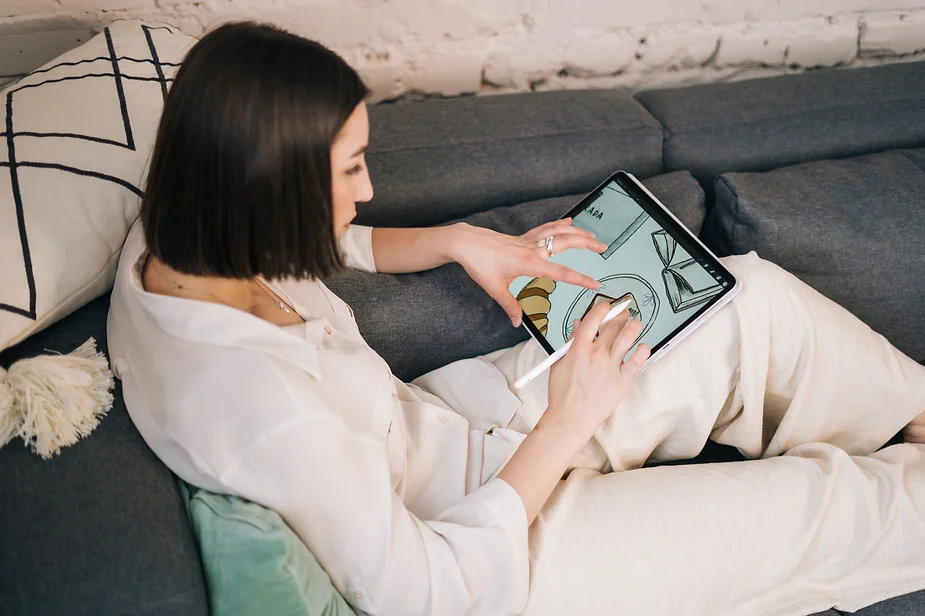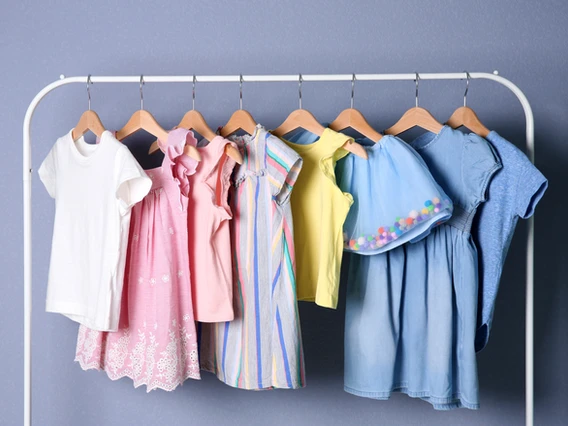- No Products In The Cart
- start shopping
The Ultimate Guide to Printing Techniques for Fashion Designers
- Posted on
- 2 comments
- Guides, Life Style, Outfits

The Ultimate Guide to Printing Techniques for Fashion Designers
Printing is a vital part of the fashion business since it allows designers to produce one-of-a-kind designs and patterns on materials. The print methods in garments come in a variety of forms, each with advantages and applications. The most often used print techniques are listed below:
The Ultimate Guide to Printing Techniques for Fashion Designers
Digital Printing
Digital printing is a type of printing that produces high-quality prints on fabric using inkjet or laser printers. This method begins with the digital creation of the designs utilising programmes like Adobe Photoshop or Illustrator. Next, using specialised, fabric-compatible printers, these digital designs are printed directly onto the fabric. In comparison to conventional printing methods, digital printing has a number of advantages.
Digital printing’s capacity to produce high-resolution prints with minute details and elaborate patterns is one of its key benefits. Using digital printing, designers can produce designs that are clear, colourful, and full of many shades and hues.
Designers can experiment with numerous colour combinations, textures, and patterns to produce unique and eye-catching designs, giving them more creative freedom in the design process.
Environmental friendliness is another benefit of digital printing. Digital printing is a more environmentally friendly choice for garment businesses because it requires less water and energy than conventional printing techniques. Moreover, digital printing lowers waste and improves efficiency by doing away with the need for separate screens, plates, or cylinders.
Several types of materials, including cotton, silk, polyester, and others, are suitable for digital printing. It works especially well for printing on synthetic materials because those can be more challenging to print on using conventional techniques.
Custom prints can be produced using digital printing, giving designers the opportunity to make one-of-a-kind items for their clients and add their own distinctive touches to their creations. Both a cut panel for location printing on a garment and a fabric roll with an all-over pattern can be printed.
Generally, digital printing presents a cutting-edge, adaptable, and green choice for printing on fabrics. Designers in the fashion sector frequently choose it because of its capacity to make fine patterns and elaborate designs.
Cost:
Compared to other traditional print methods, digital printing is more expensive due to the need for specialised labour, equipment upkeep, and dye costs.
Optimal: To give you an idea of where this might be used, this method is best for small order quantities, luxury products, detailed designs with multiple colours, realistic picture effects, instant printing, etc.
Screen Printing
Screen printing is a traditional printing technique that requires producing a stencil of the pattern on a mesh screen and then pressing ink through the stencil onto the fabric. This method is well-liked for producing eye-catching, graphic patterns and is frequently used for t-shirts and other casual clothing.
The process is a flexible and popular one that has numerous advantages. Screen printing has the benefit of being applicable to a wide range of materials, including cotton, polyester, and mixes. As a result, it is frequently used to print designs on t-shirts, sweatshirts, and other casual clothing. Moreover, a variety of ink colours, such as metallic and neon hues, can be used while screen printing to produce eye-catching and striking designs.
The fact that screen printing results in strong, enduring prints are another benefit. Screen printing uses ink that is thicker and more opaque than the ink used in other printing processes, making it less likely to fade or peel over time. Screen printing is a well-liked option for sports uniforms and other clothing that will be washed regularly due to its durability.
Large-scale printing projects frequently use screen printing because it provides economical possibilities for bulk manufacturing. The cost per item is lower than with other printing techniques because the expense of constructing the stencil or screen is dispersed over the full production run.
Placement prints are created with a flat stencil screen and a negative artwork, and ink pressing is accomplished with both hand and automatic equipment. The output of automatic machines is crisp, homogeneous, and more productive. The benefit of using manual machines is that they can handle medium-sized orders, are inexpensive, and can print a variety of value-added print qualities.
Rotary and flatbed printing devices are used for all-over prints. In rotary printing, the dyes are poured into a cylinder-shaped stencil that is then rolled over the fabric to imprint the designs.
For larger design repeats and body repeats, the flatbed all-over print technique is utilised (A single fixed all-over print design positioning to be repeated consistently throughout all production garments)
Screen printing does have a few drawbacks, though, including the fact that it might take some time to set up and that professional specialists and specialised equipment are needed to produce high-quality prints. Furthermore, it might not be appropriate for intricate patterns or prints with a lot of colours—typically more than 12 colours.
Overall, screen printing is a popular and adaptable printing technology that has numerous advantages for garment businesses trying to develop long-lasting and eye-catching patterns.
Block Printing
Block printing is an age-old printing technique that has been practised by numerous cultures all over the world. The process is particularly well-liked in nations like India, where it is referred to as “hand block printing.” Block printing creates a relief pattern by carving a design into a block of wood or another material, which is then inked and pressed into cloth. The procedure can be carried out manually or mechanically. A broad variety of designs and patterns, from straightforward geometrical forms to elaborate motifs, are possible with block printing. Layering and colour mixing are also possible, resulting in distinctive and bright prints.
Block printing uses natural materials and dyes, making it an environmentally responsible and sustainable printing technique. Block printing is frequently used to decorate homes with tablecloths, curtains, and textiles like scarves and saris. Block printing is a well-liked option for people who value traditional craftsmanship and distinctive designs because of its handmade and artisanal nature.
Heat Transfer Printing
A design is transferred to cloth using heat in the process of heat transfer printing. The design is first printed on a unique piece of paper, after which it is placed on the fabric and heated to transfer the design there. This method is well-liked for printing personalised designs on t-shirts, sweatshirts, and other clothing.
Heat transfer printing is a flexible and simple printing method that enables accurate and premium designs on fabrics. Using a heat press machine, which transfers the design from a specific paper onto the fabric by applying heat and pressure, is required for the process.
This method is useful for printing unique graphics and logos on t-shirts, sweatshirts, and other clothing. Businesses and sports teams frequently utilise it to produce branded clothes for their staff or supporters.
One advantage of heat transfer printing is that it can accurately reproduce vivid, complex images, making it perfect for duplicating intricate artwork or trademarks. It may be applied to a variety of materials, including cotton, polyester, and mixes, which is another benefit. Heat transfer printing also saves money on small production runs because it doesn’t need to make specific screens or printing plates as some other printing techniques do.
However, it’s vital to keep in mind that heat transfer prints might not be as long-lasting as certain other printing techniques, especially when put through repeated washing or abrasion. Also, it’s critical to select the proper transfer paper and ink for the fabric being used, as the incorrect mix may result in poor adherence or colour bleeding. All things considered, heat transfer printing is an adaptable and affordable printing technique that has a number of advantages for designing custom garments.
Heat Transfer Printing
Sublimation printing is a method of putting dye onto fabric by applying heat. With this method, the cloth is placed on a particular piece of paper, which has the dye printed on it, and heat is applied using a heat press. The dye vaporises and bonds with the cloth fibres as a result of the heat, producing a print that is high-quality and durable. Activewear and swimwear frequently use the all-over printing technique known as sublimation printing. One benefit of sublimation printing is that it enables the high-resolution printing of a variety of colours and intricate designs onto the fabric, producing a colourful and detailed outcome.
Sublimation printing is also long-lasting and resistant to fading, making it perfect for clothing that is constantly subjected to moisture, sunshine, and other abrasive elements. Nevertheless, because natural materials like cotton or silk cannot be dyed, sublimation printing is only effective on polyester and other synthetic fabrics.
Conclusion
Each of these printing methods has advantages and applications. We can offer advice on how to choose a printing technique for your clothing line; keep in mind the kind of design you want to make, the fabric you’ll be printing on, and your spending limit. You may develop distinctive and striking graphics that set your business apart from the competition using the appropriate printing technique. Contact us at hello@manyuinternational.com if you need assistance.








I am not sure where you’re getting your info, but good topic. I needs to spend some time learning much more or understanding more. Thanks for magnificent info I was looking for this information for my mission.
Dear, Thanks for your Appreciation